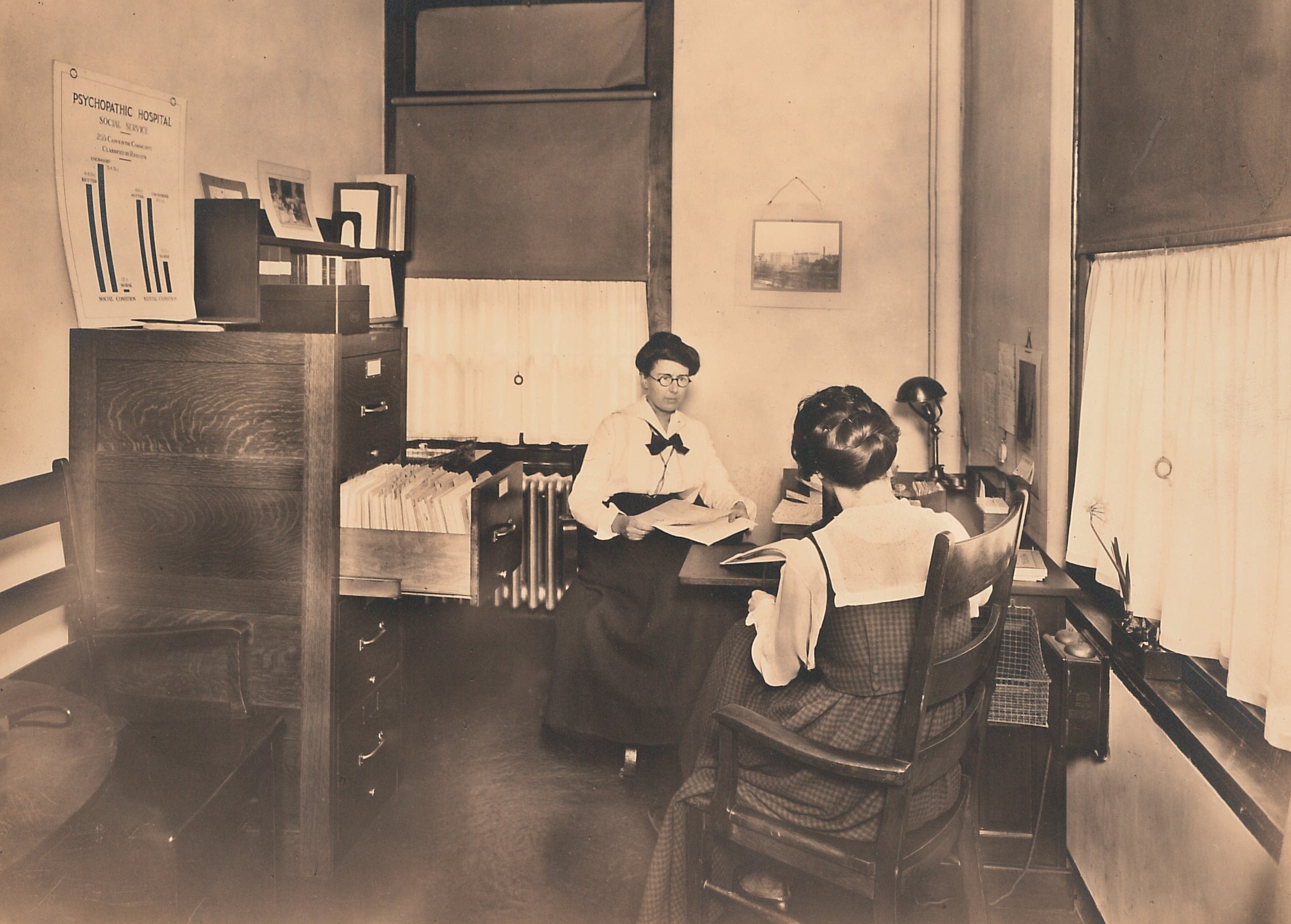[et_pb_section bb_built=”1″ fullwidth=”on” specialty=”off” next_background_color=”#000000″][et_pb_fullwidth_post_title _builder_version=”3.2.2″ meta=”off” featured_image=”off” background_color=”#cede91″ title_text_color=”#003e51″ title_font_size=”50px” custom_padding=”4%||3%|” title_font_size_tablet=”45px” title_font_size_phone=”35px” title_font_size_last_edited=”on|phone” /][/et_pb_section][et_pb_section bb_built=”1″ prev_background_color=”#000000″ next_background_color=”#000000″][et_pb_row][et_pb_column type=”4_4″][et_pb_text _builder_version=”3.2.2″ header_2_line_height=”1.2em” header_3_font_size=”18px” header_3_text_color=”#003e51″ header_2_text_color=”#003e51″ header_2_font_size=”24px”]
When the United States entered WWI in 1917, folks at Smith College began to debate the best way for the school to contribute to the war effort. Colloquial French? Nurse training?
At the same time, social worker Mary Jarrett at the Boston Psychopathic Hospital was developing a plan that might just be what Smith College was looking for.
Explore the timeline below to see how the two came together to create something wonderful.
[/et_pb_text][et_pb_text _builder_version=”3.2.2″ header_3_font_size=”21px” header_3_text_color=”#003e51″]
The founders faced many practical and theoretical obstacles, including these questions:
- Would psychiatrists recognize the validity of the training and employ the graduates?
- Would introducing a “vocational” training program change the nature of a liberal arts institution?
- Would the Surgeon General give its stamp of approval before the school started?
- Would women be able to handling traveling into the dark recesses of the human brain or were they too delicate?
You can explore how the founders faced these obstacles in the timeline below.
[/et_pb_text][/et_pb_column][/et_pb_row][/et_pb_section][et_pb_section bb_built=”1″ fullwidth=”on” specialty=”off” prev_background_color=”#000000″][et_pb_fullwidth_code _builder_version=”3.2.2″]
[/et_pb_fullwidth_code][/et_pb_section]